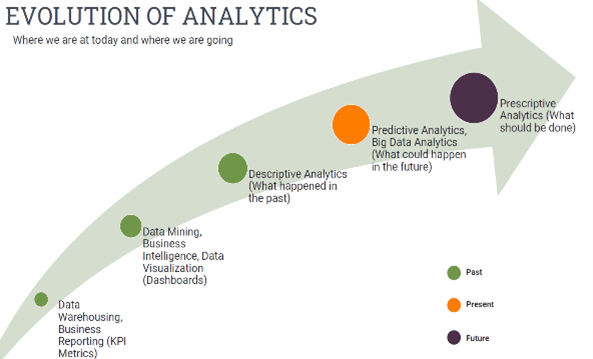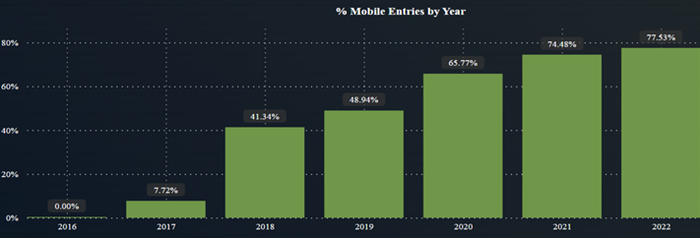What difference does a day make, after all it is just 24 hours right?
Do you know your actual real-time overall herd inventory in each barn, amount of feed in each bin, market hogs available per site to be sold?
May 3, 2023

What if you could have tomorrow's intelligence today, would you be able to make better decisions? My gut tells me you would. In business and our personal lives, we are constantly on the hunt for the silver bullet to make better, more informed decisions. We are surrounded by technology. For example, my phone predicts what the weather is going to be by the hour based on my locations, my TV suggests what shows I would like to watch, and even my house heats and cools based on my past behavior. This only works because we have data sets to create a set of analytics from.
Analytics in the swine business are nothing new; we have been measuring KPI's and using them to look back for decades. We have gotten very good at benchmarking and using this data. As an industry, we are on the path illustrated in the chart Evolution of Analytics, where we are moving in the direction of Predictive or What could happen in the future and eventually towards Prescriptive or What should be done. To make these moves, I maintain that we need to have Real-Time Decision-Making power. How do we get that data in a place where it can be useful? It needs to be convenient, just in time and reliable.

Think about how we capture moments today versus 10 years ago, do we tote around a large film camera? For the most part now, we reach into our pocket and grab our phone, capture and document the event in real-time. What difference does a "day" make to share a milestone event? Instead of waiting for the film to be developed, we print a picture to share what we have created or documented an event in 30 seconds. Don't think that improvement matters, just ask a new grandparent!
So how do we make farm/mill data collection and imports just as convenient and reliable? Being able to capture the event and automate the entry in real-time is a great start. Data compiled by MetaFarms Insights shows a steady increase in mobile entry of mortalities, a very common KPI used today. It's no surprise that these increases have come with the introduction of technology at the farm to capture the data at the farm event level. The chart below shows the Total Mortality Entries entered into MetaFarms over the years in green and shows a steady growth, year over year, using mobile based entries in pink.

Another way to look at it is by percentage of Mobile Entries versus traditionally calling in mortalities weekly, manually entering them, and then having them added to the data set. The chart below shows how MetaFarms customers, in general, enter their mortality data via a mobile app more than 75% of the time. Think about how this real-time data could be used for a more accurate animal inventory. What is that "day" worth to your operation?

The largest improvement has come with the advent of devices used in the barns to capture the data. It started with workstations in the barns, moved to RFID tag readers, to tablets both on and off-line, and finally to phone apps and Chainway devices, pictured below, for rapid entry.
Real-Time Decision-Making is defined as the ability to deliver decision support within the shortest possible timeframe, using the best possible set of data and decision-making model, to direct and report on business operations and interactions.
One of our customers placed an emphasis on improving days from event to recording data in the system. A little dive into the numbers helps tell the case story. The chart below graphs the combined Average Total Days from the mortality event to entry into the system. In 2020, the farms were averaging an 8.54-day lag from event capture to input. Currently in 2023, the customer is looking at just under a ½ day lag.

Capturing mortality events is just one example of when a higher percentage of entries are made from a mobile application it corresponds to fewer days from event to real-time system wide information. This system started using mobile applications in 2021 and gained a very high compliance percentage.

Finally, we are showing the system achieving almost real-time data, .13-day, system wide when we have high adaptation of mobile entry methods. This system was able to measure and make nearly an eight-day improvement towards real-time data.

This quick case study shows that the swine industry is poised to make these leaps; I am challenging you to look for ways to gain these "days" in your real-time decision-making progress. Like driving a vehicle, the front windshield is much bigger than the review mirror, as an industry we can let the data sets and behaviors of past help predict a better future, while using real-time data to clarify and really see the big picture.
Do you know your actual "real-time" overall herd inventory in each barn, amount of feed in each bin, market hogs available per site to be sold and which day and plant they would create the most potential revenue from being sold? How would you make decisions armed with tomorrow's intelligence today?
So again, I will ask what is a "day" worth?
MetaFarms Analytic Insights were used to provide the context and trends for this article. If you would like to discuss how days between event and entry could affect your performance and bottom line, or if you have suggestions on production areas to be included in future articles, please e-mail or call us. We enjoy being a part of the National Hog Farmer Weekly Preview team. Previous Production Preview columns can be found at National Hog Farmer.
If you have questions or comments about these columns, or if you have a specific performance measurement that you would like us to write about, please contact: Nicole Boettger via email.
You May Also Like



